Drugs and alcohol tend to influence your mind to develop ideas and thoughts you wouldn’t have if you were sober. Some people suggest that these substances unlock a suppressed level of consciousness that helps them with their painting, but this is yet to be scientifically proven.
History’s most outstanding artists created original artwork under the influence, and although they are celebrated for their work, they paid a considerable price. Most renowned artists struggled with substance use disorder, mental disorder, or both. Some also struggled with drug-induced mental illness and other health complications.
Many artists, both the successful ones and those who haven’t yet received their big break, suffer the effects of abusing alcohol or drugs. We enjoy their paintings and artwork, yet remain blissfully unaware of how the artists are addicted to drugs.
This article looks at the relationship between drugs and artistry. First, we will look at world-famous artists and their drug use. Read on.
Below are some world-famous artists that struggled with addiction.

The painter, Vincent van Gogh is known for his noticeable yellow hues and somber movement in paintings. These are often linked to his unhealthy relationship with illegal drugs.
Most people are aware that he struggled with both mental and physical illness. The world remembers him as a tragic artist, and his story continues to inspire modern art, including films and classic songs.
Van Gogh’s drug of choice was absinthe, a spirit with high alcohol content in the 19th century. He reportedly also abused digitalis, a drug that treated epilepsy at the time.
Although most people attribute his success to substance abuse, Vincent van Gogh admitted that his creativity peaked when he was sober.
Andy Warhol is another famous artist who abused drugs. Warhol was recognized for his colorful paintings, most notably his depictions of celebrities in the twentieth century.
Warhol’s drug of choice was obetrol, an amphetamine diet pill common at the time. Since obetrol is a stimulant, Warhol reportedly abused it daily to finish his projects faster.
Thomas Kinkade is famous for his depictions of landscapes and cottages. His wall art is displayed in living rooms worldwide.
Kinkade used his artwork as an outlet for emotions. But unfortunately, he had several personal problems, including financial issues and a pending divorce, leading to drug abuse.
Kinkade’s drugs of choice were Valium and alcohol. He suffered from a substance use disorder which eventually caused his death in 2012.
Most post-war artists used illegal drugs to numb their pain and enhance creativity, and Mark Rothko happened to be one of them. Rothko struggled with various issues, including depression and a troubled marriage. As a result, his artwork depicts intense emotions since it was his form of self-expression.
Mark Rothko turned to anti-depressants and alcohol to numb his emotions. Although he had several masterpieces, he succumbed to depression. On 25th February 1970, the famous artist was found dead in his house. He had cut his wrists and overdosed on drugs.
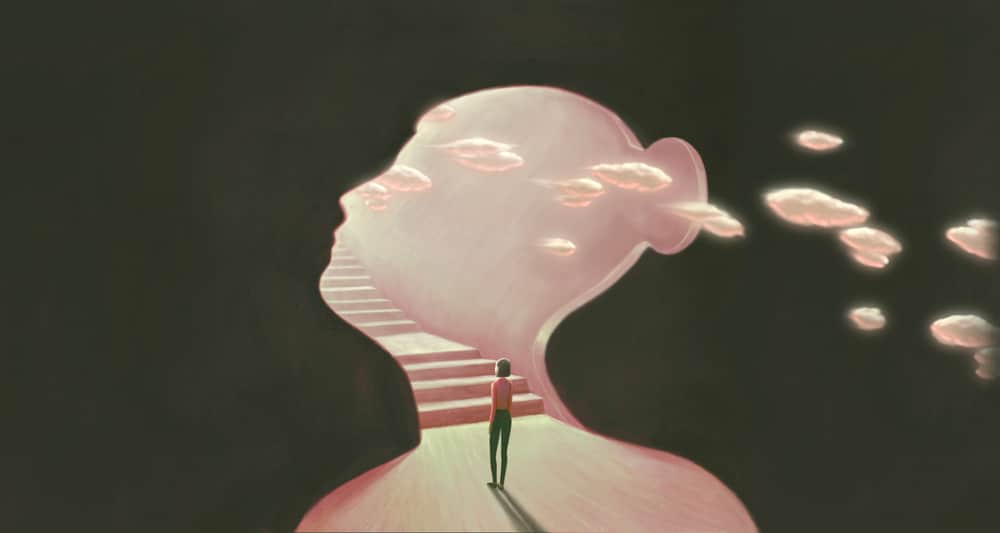
According to the National Institute on Drug Abuse, most artists abuse drugs to improve their awareness and imagination. A well-known myth is that artists use drugs to channel their creativity and make better art, but this isn’t true because alcohol and drugs are not essential to the creative process.
Most people believe that art stems from hardship and pain. To prove the point, many of those experiencing hardship and pain abuse drugs to cope. Often, problems and pain cause mental health issues. Anxiety, Post Traumatic Stress Disorder, depression, and other mental health issues are risk factors for drug abuse.
Unfortunately, artists with these underlying mental issues are more likely to use illegal drugs.
Some artists also use drugs because they are surrounded by people who themselves abuse drugs. What starts as a form of curiosity and an attempt to gain inspiration relax quickly becomes an addiction. In no time, the artist becomes 100% dependent on the drugs.
An example of an artist that tried drugs out of curiosity was Pablo Picasso, one of the most influential artists in the 20th century. The Spanish painter, famous for Les Demoiselles d’Avignon, a controversial oil painting of five nude female prostitutes in a brothel on Carrer d’Avinyó, experimented with opium between 1904 and 1908. He, however, renounced the drug in 1908 after his housemate committed suicide.

Renowned horror author, Stephen King, opened up about his battle with addiction. He noted that his biggest fear about getting sober was losing his creativity.
Stephen King said that after getting sober, he found it challenging to write, but with time, he figured out how to channel his creativity into writing outstanding books.
Most recovered artists have revealed that their creativity increased during sobriety. The main reason for this is that you are more clear-headed when sober. As a result, your judgment is not clouded, your cognitive functions are better, and you don’t waste time abusing drugs.
Here are a few things you can do to stay creative during recovery:
Deciding to get addiction treatment is often the most challenging step. However, you should know there is no shame in asking for help. Struggling With addiction has all the resources you need on addiction. Contact us if you have any questions, or search our Rehab Directory to access reputable treatment facilities near you.
Drug abuse or addiction is a huge problem in the United States. According to the 2018 National Survey on Drug Use and Health report, 164.8 million people aged 12 or older (60.2%) had used substances like illegal drugs, alcohol, or tobacco in the past month. Within that time, 47 million people smoked cigarettes, and 139.8 million drank alcohol. The survey adds that 19.4% of the population had used an illicit drug in the past year, with marijuana accounting for 15.9% of use. Prescription drugs misuse came second with 3.6%.
Sadly, the drug problem causes addiction, physical and psychological problems, and in some cases, death. In 2019 alone, there were about 71,000 drug overdose deaths in the country, and the trend seems to be holding up. While the drug use problem is rampant in the country, it’s important to note that not all states are struggling with the same types of substances. Different states have different drug problems, each with varying severity. This article will look at how drug of choice differs across the United States.
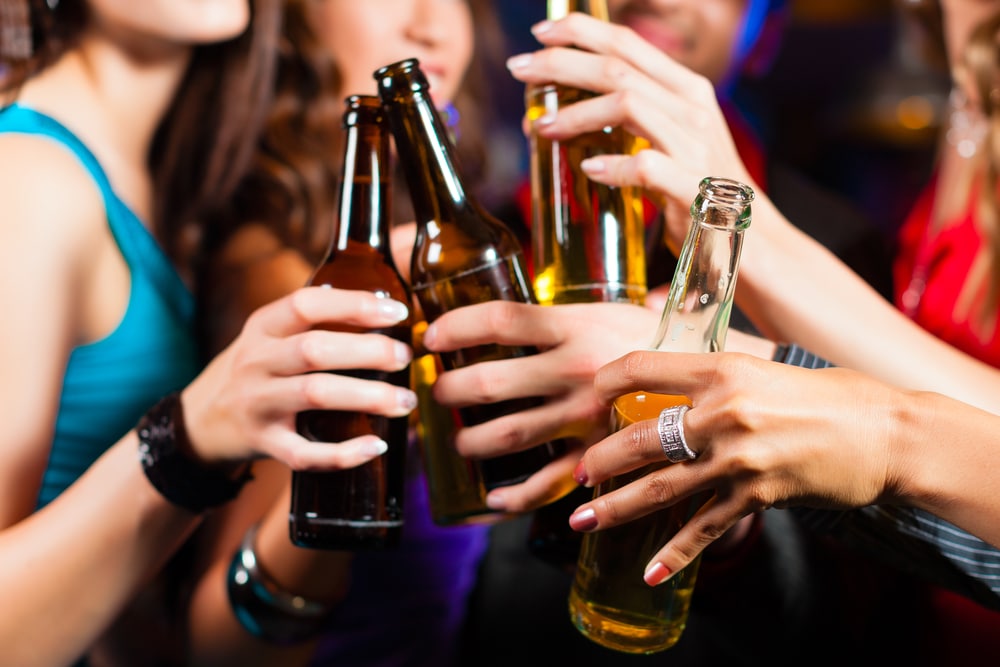
The legal drinking age in the US is 21 years old and is strictly enforced. However, statistics show that young adults in the country are also indulging in alcohol use. The National Institute on Alcohol Abuse and Alcoholism pointed out that most states had a 2.35 gallons per capita alcohol consumption in 2016, which exceeds the country’s goal of 2.1.
Currently, New Hampshire is the state with the highest alcohol consumption per capita of 4.67 gallons. This is over double the country’s set goal. But Statista notes that the state has lower rates of binge drinking than other states. States like Iowa, Wisconsin, North Dakota, and South Dakota have the highest rates of binge drinking. Binge drinking is the consumption of 4 or more drinks within 2 hours for women and five or more drinks with 2 hours for men. It is the most common form of excessive drinking and is linked to severe risks.
Utah is on the other end of the spectrum, with the lowest alcohol consumption per capita of 1.34 gallons. This is mainly attributable to the strict alcohol regulations in the state. Utah is one of the nine states with per capita less than 2.1 gallons.
The federal government classified marijuana as a schedule I drug, along with others like cocaine and heroin. However, 18 states and the country’s capital have legalized marijuana use for adults, while 36 states, including the US Virgin Islands, Guam, District of Columbia, Northern Mariana Islands, and Puerto Rico, allow for comprehensive public medical marijuana programs. Consequently, the states with fewer marijuana restrictions tend to have higher use rates. In fact, states like Washington, Oregon, Colorado, and Alaska are among the top 12 states with the highest use rates.

Currently, cannabis use among US adults in 2018-19 was highest in the District of Columbia, with about 27% of adults using the drug. South Dakota has the least marijuana use, with about 11.13%, according to Statista:
After pharmaceutical companies reassured the medical community that pain relievers wouldn’t cause addiction, healthcare providers started prescribing these drugs at greater rates in the late 1990s. This led to vast misuse of both opioid drugs before it became apparent that they could indeed be highly addictive. According to NSDUH’s 2020 survey, 10.1 million people misused prescription opioids in the past.
Studies show that prescription drugs are gateway drugs, leading people to use street drugs like heroin, fentanyl and cocaine. Prescription drugs have low opioid levels and are often used as pain-relievers. But chronic pain patients may need to take these drugs for a longer time, exposing themselves to the risks of drug addiction, and tolerance. So many chronic patients end up taking more pills each day, which can be expensive or inaccessible. As a result, they turn to alternatives like fentanyl and heroin to achieve the desired effect and avoid withdrawal symptoms.
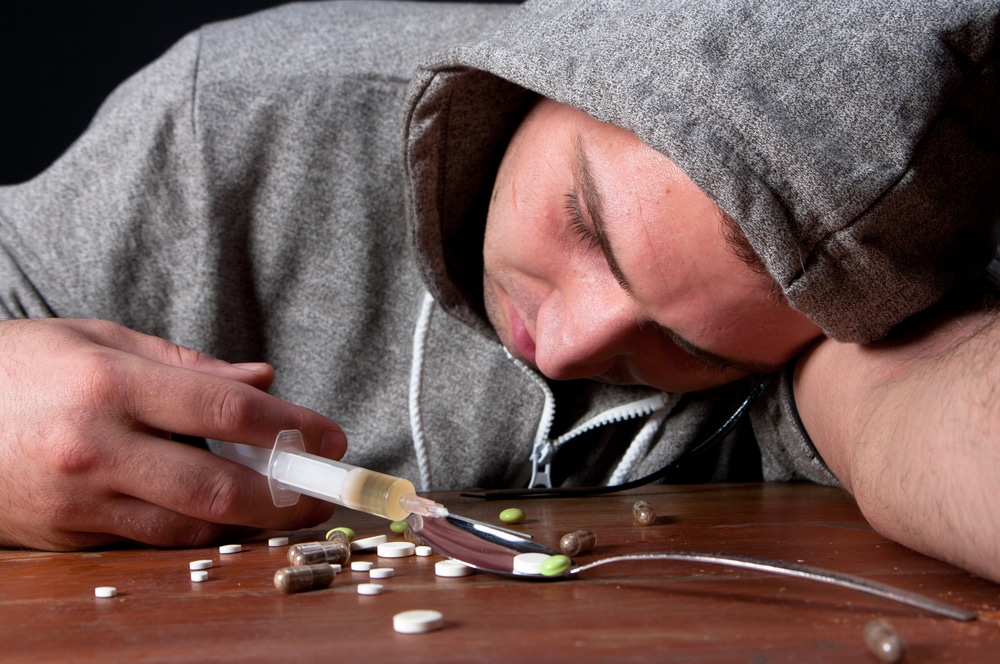
The escalating use of prescription opioids for pain management has contributed significantly to the opioid epidemic. Opioid is widely used across the US, but it disproportionately affects the states of West Virginia, Maryland, New Hampshire, and Ohio. According to the National Institute of Health, these states had the highest rate of fatal opioid overdoses, with 42.4, 33.7, 33.1, and 29.6 per 100,000 people, respectively. Hawaii, Iowa, Texas, and California had the least overdoses, accounting for 4.1, 4.8, 4.8 ad 5.8 per 100,000, respectively.
Aside from the overdose cases, opioids, alongside other drugs like heroin, are primarily used in populous states and those that serve as entry points. A survey based on HHS and the Substance Abuse and Mental Health Services Administration’s ranked states by opioid misuse rates, and these were the findings:
While some states use specific substances more than others, the reality is that Americans are using alcohol or drugs and, sometimes, a combination of both. Alcohol and nicotine are legal and loosely regulated. The fact that they are affordable and easily accessible makes them a drug of choice for many people. Despite these, alcohol and nicotine carry a risk for addiction and even death.
Prescription medications are also technically legal. And since the doctors issue them, some Americans abuse them assuming it’s safe. But prescription drugs are highly addictive and can serve as a gateway to other drugs like heroin and fentanyl. Besides, these drugs account for 30% of emergency room admissions.
And with the growing cases of mental illness across the country, many are self-medicating with cocaine, marijuana, or alcohol. Unfortunately, these mind-altering substances offer temporary relief but may lead to addiction and other health-related issues.
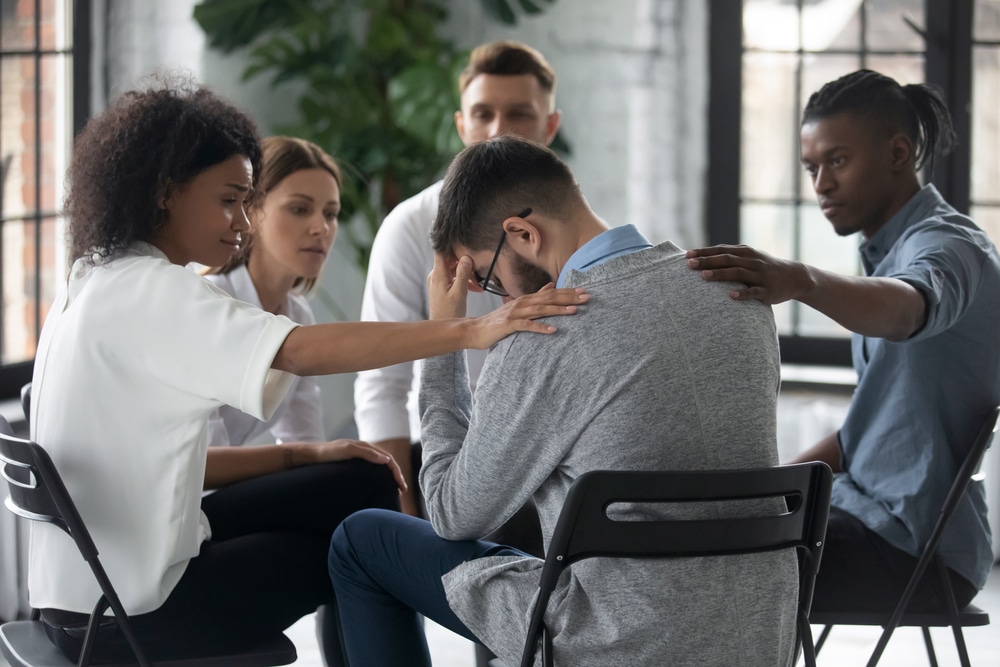
Americans use drugs and alcohol for various reasons. Some do so as a social activity, like after work or during holidays, while others use it to fit in. Availability, experimenting, self-medicating, feeling good, etc., are common reasons people use drugs across the country. But there are other risk factors like having family members who abuse substances that predispose one to use.
Drug of choice may differ from state to state due to availability, state laws, and influence. But all in all, the drug is still a problem irrespective of the type of drug. If you or someone close to you is addicted to drugs, it is best to seek substance abuse treatment. Many treatment approaches exist to help you lead a drug-free life.
Summertime is a fun time, especially for teens and young adults. It’s hard to get bored on a summer day or night. That’s because there are plenty of parties, music festivals, trips and camping going on. But along with the fun, comes the risk of using drugs and alcohol.
Drugs and alcohol are a mainstay for most summer parties and events. And with all the free time and no commitment, teens are more inclined to indulge in use. Drug use can lead to addiction and overdose. But the hot weather also increases the risk of overheating, which may spiral out to other serious problems. So, before throwing caution to the wind during this season, you need to consider how impactful a single wrong decision can be.
A study by the National Survey on Drug Use and Health (NSDUH) that ran from 2011 to 2017 shows that most teens and young adults tried out recreational or illegal drugs for the first time during summer.
Surprising? This should be more concerning than surprising as the seasonal environment tends to increase exposure to drugs.
Here are the top factors that make drug use so rampant during summer:
Summer tends to come just when you are done with your semester or free to enjoy longer holiday weekends. This gives you so much free time on your hands and room to be introduced to drugs and alcohol.

Who stays indoors in such hot weather? Summer plans are meant to be as exciting as possible, which is why it is the period that outdoor activities and social gatherings peak. Nevertheless, as you hop from one party or event to the next, there is no limit to the number of drugs and amount of alcohol you will get exposed to.
It is great that you received a nod from your parents/guardians to go for that camping trip or have your holiday by the beach. This means there is no adult to watch your actions as you spend time with daring friends who are willing to try out anything. Unfortunately, this also means lots of drugs and alcohol will be coming your way.
Summer might be the best time for outdoor activities and getting in touch with family and friends, but it is also a dangerous time to use drugs. The high heat and humidity experienced means that you need to quickly cool off to avoid overheating. This is why your body naturally increases blood flow to the skin, which acts as a radiator, and you sweat more to increase heat loss.
But, these well-coordinated biological processes do not remain the same when you take drugs. The disruption that most recreational and illegal drugs cause to your body’s natural cooling mechanism is extremely dangerous as it increases your risks of overheating.
It gets worse as you will be high or intoxicated, and your body will not perceive the increased heat threat. This can lead to heatstroke, heat cramps, heat exhaustion, or even death.

Generally, most drugs will mess you up regardless of the weather and should be avoided at all costs. During summer, the odds are higher, and here are the most dangerous drugs to use when it is hot:
A recent publication in the Annals of Internal Medicine authored by Dr. Craig Crandall describes cocaine as a double-edged sword during summer. On the one hand, this is because it affects your body’s ability to regulate temperatures naturally. But, on the other hand, it gets you agitated, yet you don’t feel hot.”
Studies by the National Institute on Drug Abuse have further shown that cocaine-related deaths spike in summers. In addition, the risk of heat stroke or sudden shock and death is higher when you use cocaine because it leads to increased heart rate, confusion, having too much energy, and promotes blood clotting.
The most popular drug in outdoor music festivals for teens and young adults is MDMA or Ecstasy, or Molly, commonly used in pill form. Unfortunately, while it is used as a ‘rave drug’ that helps get into a party mood, it affects your ability to regulate body temperatures and increases heart rate and blood pressure. The results are often catastrophic as it leads to hypothermia, a life-threatening condition when urgent medical care is not provided.
Another drug that is taking the day across the United States is mephedrone or bath salts. This is a synthetic drug often sold as plant food, decorative sand, or toy cleaner.
However, bath salts are nothing close to the veil they wear as a ‘safe product.’ Used in hot weather, it causes increased heart rate and disrupts your ability to regulate body temperature. This can easily lead to heat stroke or death when emergency medical attention is not provided. It also has severe side effects such as teeth clenching and can quickly become addictive.
It is saddening that heroin use among teenagers and young adults is on the rise. This illegal drug commands a big share of the opioid epidemic that has affected the nation. It has severe effects when used during hot weather and could easily cause hypothermia, leaving you unconscious or in a coma.
Having legal access to alcohol as a young adult does not mean your summer should be all about binge drinking. Drinking alcohol in hot weather will see you quickly lose body water & nutrients, disrupt heat regulation, and impair your judgment. This will cause your body to overheat, increasing the risk of dehydration or heat stroke.
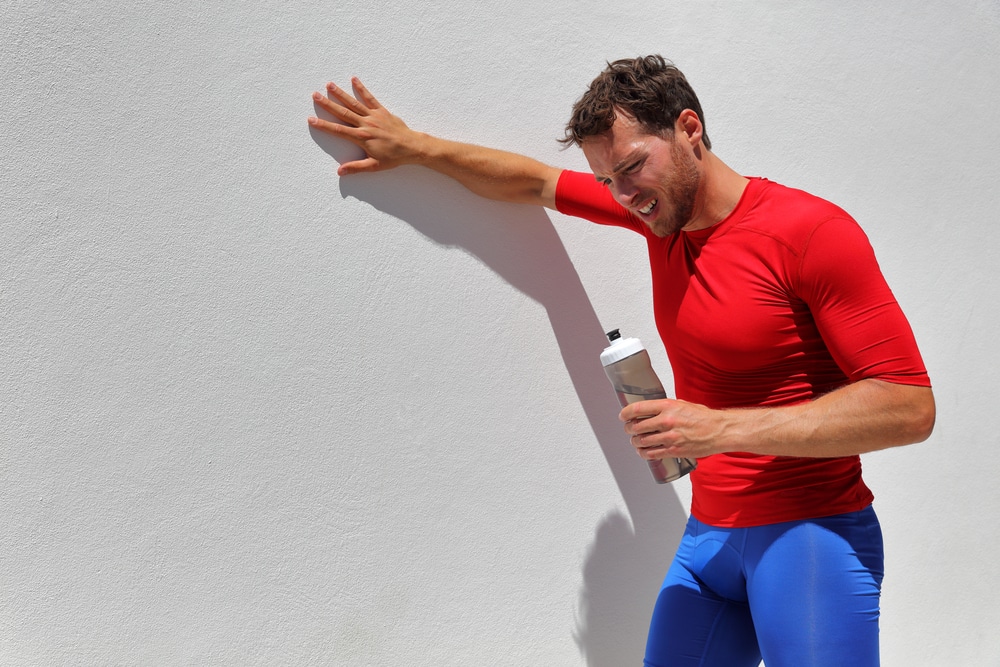
Summers should be a time of creating good memories by bonding with your friends and family. As you grow older, these memories will make some of the best highlights in your life. In turn, the last thing you need to do is let the seasonal environment or party wave influence you to start taking drugs.
If you have already started taking drugs, be sure not to turn into a long-term addict. In addition, there is no fun in having your body overheat because of using drugs in hot weather. This could quickly turn fatal, turning a happy summer into a dreadful moment for you and your loved ones.
Since it is becoming more challenging to avoid exposure to drugs, especially during summer, it is best to talk to a substance abuse counselor. This way, you will be better prepared to go through your teenage years and young adult life without abusing drugs. It also helps never to forget that summer fun does not have to involve indulgence in drugs.
The modern-day youth is bombarded with the contradictory portrayal of drugs. In school, they’re told never to try out drugs. But the outside world glorifies it through movies, music and television.
Feeling a little anxious or stressed out? Go to the bar. Drink your struggle away. Maybe sniff some cocaine or shoot-up some heroin.
The promise of escape and allure of all things prohibited makes drugs and alcohol almost irresistible. And with enticing names like devil drug, perfect high, love drug, joy juice, fantasy, putting the drugs on the pedestal, it’s easy to see why more people get drawn in.

The world of drugs may seem enticing. But sadly, drug use rarely ends well. Many people who try out hard drugs like heroin or cocaine often end up with tolerance and addiction. Just recently, the Pirates of the Caribbean actor, Johnny Depp said he started using drugs and alcohol when he was young and he’s been struggling with addiction throughout his life.
It’s always better to stay clean. But if you’re already using, you may benefit talking to an addiction treatment expert. Here are seven movies about drug addiction that will give you a glimpse into how addiction can ruin life.
Requiem for a Dream is perhaps the most haunting drug film on addiction that you’ll ever see. It’s more of a nightmare than a dream. Unlike other films where characters overcome addiction, Requiem for a Dream shows how substance abuse inundates someone to the point where they’re unrecognizable. The movie is an effectively troubling depiction of drug use.
In the movie, Harry Goldfarb and Marion Silver play lovebirds who are either obsessed with their mutual love for heroin or their love for each other. Tyrone plays Harry’s drug-dealing partner, who’s struggling with heroin addiction. Then, Sara Goldfarb rounds out as Jared’s mother who also struggles with an addiction to diet pills.
The director uses extreme close-ups to show how drugs act on his cast. According to Roger Ebert’s review of the movie, “Sequences are done in fast-motion, to show how quickly the drugs take effect--and how disappointingly soon they fade. The in-between times edge toward desperation.”
Humor might not seem to have a place in an addiction movie. But director Boyle can add just enough of it to make the dark moments more impactful. Trainspotting is an Academy Award-nominated film that follows a group of heroin addicts in Edinburgh and their passage through life. It is a critically acclaimed film that’s regarded by many critics as one of the best films of the 1990s.
It follows Mark Renton, his underage girlfriend Diane, and friends: dimbulb Spud, wannabe Sick Boy, psycho Begbie, and clean-cut Tommy. Begbie and Sick Boy are incredibly negative influences on Renton, and Tommy and Spud are victims of Renton’s selfishness.
In the film, Renton and his friends commit violent crimes to sustain their addiction lifestyle. But despite all the friends agreeing there’s no better feeling than being high, Renton attempts to get clean. He quickly realizes he can never quit using in his current environment. The problem is getting out of their influence is not as easy as moving to a new place.
The Basketball Diaries tells a story of Jim’s teenage years as an upcoming writer and school basketball player who develops an addiction to heroin. His life revolves around the basketball court, which becomes a metaphor for the world in his mind. With a homosexual coach, a sick, dying best friend, and an appetite for heroin, Jim’s dream of becoming a star remains just that – a dream.
Soon, he moves to the dark streets of New York and can’t go back home. Heroin is his only escape. Though he has to steal, rob, or sell himself to sustain his habit. But thanks to Reggie, an old friend, Jim gets the help he needs to regain control over his life.
Our list of seven movies about drugs could not be complete without the Drugstore Cowboy. The Drugstore Cowboy is one of the first movies that showed gritty, urban drug abuse with all its associated despair on full display.
In the movie, Bob and his wife Diane love to use different prescription drugs like morphine and Dilaudid. So, they decide to steal the drugs from pharmacies in Portland, Oregon. But when a cop gets too close for comfort, they move the operation to another town.
Soon, Nadine, who is one of their crew members, dies of an OD. Bob decides he must leave his wife and friends and go straight. But it doesn’t get easier.
Last Days is a story of Seattle music scene star, based loosely on Kurt Cobain, who led the band Nirvana. In the film, Blake, an artist is warping under the weight of fame, growing feelings of isolation and professional obligations. He wanders about a big stone house in the woods, walking aimlessly, preparing meals, and blocking out people. He’s lost interest in everything, including fame, money, friends, and even family.
The movie is an ultimate record of death by gradual exhaustion. It shows how people struggling with addiction often die with a whimper. Usually, they don’t even realize what’s happening.
The Traffic film takes an exciting approach to drugs and drug use. It looks at drug use from three different angles. A conservative Supreme Court judge appointed as the nation’s Drug csar but unaware that his daughter abuses heroin.
Then two DEA agents are tracking the wife of an ex-drug dealer looking to take charge of the drug traffickers her husband did business with. And finally, a Mexican policeman who takes it upon himself to fight powerful cartels in his town.
Inspired by Traffik, which ran in in the 1990s and traced the heroin movement from Turkey to Europe, Traffic uses a level-headed approach. It observes, watches, and doesn’t do much editorializing. Most astonishing is the character who notes that 100,000 white people drive through black neighborhoods seeking drugs at any instance in the US. The character also observes that a person in the drug trade who earns $200 in two hours can hardly seek other employment.
Pure is a resolute portrait of the unbreakable bond between a loving son and an addicted mother. In the movie, Paul struggles through his teenage years after the death of his father.
Mel, his mother, is hooked on heroin and cannot look after him or his younger brother. Paul finds a friend in a young waitress, Louise. But she also has severe drug issues and can’t provide any solid help.
Faced with a persuasive policeman, violent dealers, and unreliable mother, he gradually comes to terms with his parent being an addict, but unflinchingly believes she can reform. In one painful scene, Mel tries to quit drugs cold turkey.
Paul is not to listen to her cries until she quits. He even nails her bedroom door shut. But it doesn’t end well.
Misuse of prescription drugs is a serious health issue in the US. A 2017 report by the National Survey on Drug Use and Health shows that 18 million people misused prescribed medications at least once in 2016. Most of these people assume that pain drugs are safer than illicit substances because they are prescribed medically. But they have become a "gateway drug" for many Americans.
When these drugs are taken in ways not intended by the doctor or taken by someone who’s not the patient, they can lead to severe health issues. Studies show that misuse of opioid pain relievers has opened the door to heroin use. Mental health is important, and mental illness can further drive drug use through something known as dual diagnosis.

Prescription opioids contain chemicals that relax the body and relieve pain. They are an essential component of treatment that, when used correctly, can enhance the quality of life and provide pain relief. But since opioids make people feel very relaxed and high, they’re sometimes used for non-medical reasons. This poses a serious risk of addiction. Opioids are highly addictive, and their misuse often leads to opioid use disorders, drug overdoses, and death. Common examples of prescription opioids include:
· Oxycodone (Percocet®, OxyContin®)
· Hydrocodone (Vicodin®)
· Oxymorphone (Opana®)
· Fentanyl
· Morphine (Avinza®, Kadian®,)
· Codeine
Opioid medications are effective for pain management. They are generally safe when used for a short time and according to the doctor’s prescription. Opioid misuse happens when a person:
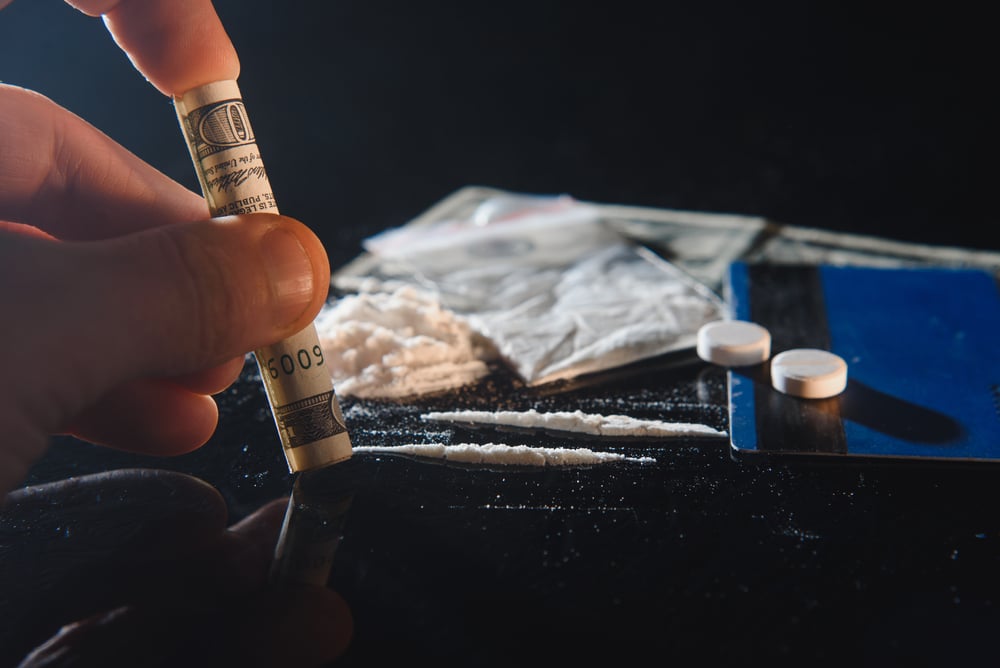
Humans have opiate receptors in the brain that are responsible for feelings of pleasure and pain. Opioids work by binding to these opiate receptors in the spinal cord, brain, and other locations in the body. They mimic the effect of pain-relieving chemicals that are produced naturally and block the pain perception.
Repeated use increases tolerance. So one may need to take higher doses to achieve the same pain-relieving effects or reduce withdrawal symptoms. At this stage, someone becomes opioid-dependent and may develop drug-seeking behaviors to sustain their need for use. Others may turn to non-prescription alternatives like heroin, because it’s cheap, easy to access, and has a similar chemical composition as synthetic opioids.
Most sober people won’t use hard drugs like heroin, meth, and cocaine because of the perceived danger. They tend to keep away because they are aware of the drugs’ potency and danger. On the other hand, pain-relieving opioids create a different perception. Most people see them as safe because they are prescribed at the hospital.
On their own, prescription drugs might not pose a threat. But when combined with some risk factors like mental health or misuse problems, prescription drugs may indeed be dangerous. In fact, they may serve as a doorway to other more powerful and highly addictive substances – like cocaine and heroin. People who are struggling with addiction or mental health issues are less likely to have inhibitions about using cocaine or meth.
Heroin has a similar chemical composition as prescription opioids. It is also cheaper and highly accessible as compared to prescription opioids. This makes it an appealing alternative for people who are addicted to opioid drugs. According to the National Institute on Drug Abuse, about 4 to 6 percent of those who misuse prescribed opioids switch to heroin.
The most current data shows 33% of those entering treatment for opioid use disorder reported heroin as the first opioid they used frequently to get high. A study in the Chicago metropolitan area identified prescription opioid abuse as a path to heroin addiction.
As with any other addiction, patients with opioid dependence will always try to find more drugs to stay high. Current state laws and regulations limit opioid prescription. This makes it hard for these addicted patients to access prescription drugs so most of them turn to the streets to buy opioids and other drugs.
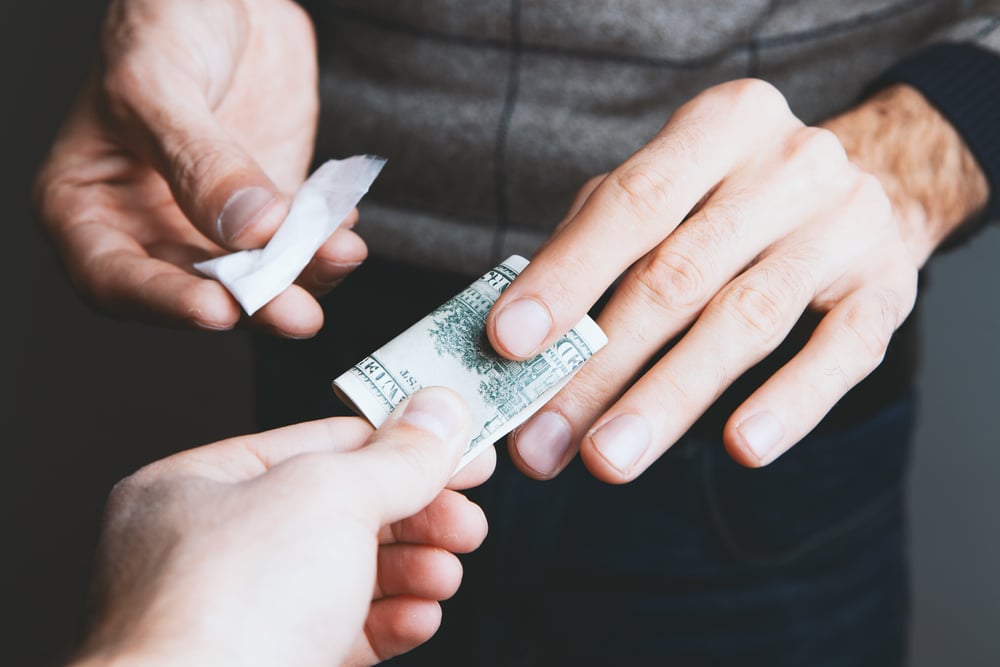
When they reach this point, they become determined to At this point, high and/or reducing the withdrawal symptoms. They only focus on what’s available and what they can pay for. Unfortunely, they ignore the impurities in the pills or resulting side effects.
While opioid overdose deaths are prevalent these days, a new study analyzed the role people sharing their pain medications with others may play in driving this drug epidemic. Of the 1,200 Americans in the study, 75% said they believed selling or sharing unused prescriptions fueled the nation’s addiction epidemic. 10% admitted that they had given or offered their medications to friends or family members for recreational or medical use.
When people (other than the patient) misuse prescription drugs for recreation or other reasons, they may develop an addiction that pushes them to get more drugs. Unfortunately, many of these people end up abusing other drugs to get high or offset the withdrawal symptoms. This puts them at risk of drug overdose and even death. According to the National Institute on Drug Abuse, drug overdose deaths involving prescription opioids rose from 3,442 to 17,029 between 1999 and 2017.
The short answer is yes. Drug abuse is a spectrum. It can start with prescription drug misuse or outright drug experimentation and end up in a full-blown addiction to the same or other drugs. People who knowingly or unknowingly misuse prescription drugs may feel the need to sustain their high.
When they can longer get a prescription from the hospital, they will branch out to find readily available drugs that will “quench their thirst.” The same applies to those who use prescription medication for recreational or experimentation reasons.
Substance abuse disorder is a complicated problem. But the good news is that programs exist to help people stop abusing prescription and illicit drugs and regain control of their lives. No matter how severe the situation is, health care experts in addiction treatment centers can offer the much-needed help.
A well-crafted, relatable and unique story is eye-opening. It taps into our emotions and moves us in ways we never thought possible. Whether its joy, motivation, sadness, or an outright scare, a good story can shift the way we perceive or do things.
Movies are great sources of such stories. Those that feature drugs, substance abuse, and addiction, for instance, may tell stories through the eyes of an addict (or the people in their lives). Watching such movies play out can build your understanding of the nature of dependency and the beauty of recovery. It may also help you feel less alone – and hopefully, work towards changing your life.
In this article, we will highlight the must-see box office movies around drugs and addiction. Most of these films feature stuff that happen in real life. So they're a true story and a depiction of how substance abuse can send you in a downward spiral. We hope that these movies will serve as an eye-opener and potentially help you deviate from using drugs or alcohol.

From Trainspotting to Less Than Zero, here is a list of critically acclaimed drug addiction movies that will scare you straight from drugs:
Starring: Ewan McGregor, Ewen Bremner, Jonny Lee Miller, Kevin McKidd, Robert Carlyle, Kelly Macdonald
Directed by: Danny Boyle
Based on: Irvine Welsh's novel Trainspotting
Released: 1996
Trainspotting is a brutal – often funny, other times bone-chilling – depiction of drug addiction in Edinburgh. It's not your average movie and definitely not for the faint of heart, but an entertaining and realistic reminder of the horrors of substance abuse.
The film revolves around Renton's struggle with heroin addiction and how it influences his actions. It raises interesting questions about drug addiction, its causes, and what it means to lead a clean life. From time to time, Renton ruminates on junkies' mindsets and their drive for the next hit. He commits various crimes and harms those around him because of the addiction. But the movie also shows images that help viewers understand the forces behind his actions. It will leave you sympathizing with him despite his wrongdoings.
Make no mistake. Trainspotting doesn't glamorize drug use. It mostly shows how deep addicts will sink and the harsh living conditions they'll endure as long as they continue to abuse substances. It also shows how addiction affects the people around them. One particularly memorable scene is when Ewan McGregor's character goes through heroin withdrawal symptoms. But more terrible than beds and toilets full of feces is the death of baby Dawn. Dawn dies from neglect as her mother is lost in a heroin-induced stupor.
Starring: Ellen Burstyn, Jared Leto, Jennifer Connelly, and Marlon Wayans
Directed by: Darren Aronofsky
Based on: Hubert Selby Jr.'s Requiem for a Dream
Released: 2000
We cannot talk about movies that will scare you straight from drugs and not mention Requiem for a Dream. It is one of the most popular yet depressing drug films that you'll ever watch. Requiem for a Dream follows four characters whose lives are gradually destroyed by their various addictions and the emotional void they're trying to fill. The film parallels the lives of a lonely, widowed Sara, her sweet aimless son, Harry, his girlfriend, Marion, and his drug dealer friend Tyrone.
Protagonist Harry is your typical heroin junkie who's trying to get off drugs with the help of cocaine-crazed Marion and Tyrone. Meanwhile, his mother, who learns that she'll appear on a TV game show, desperately wants to lose weight so she can fit into her prized red dress. She eventually ends up hooked on diet pills.
Requiem for a Dream involves amphetamine and heroin use and escalates into electroconvulsive treatment, sexual humiliation, incarnation, and amputation. It ends with these characters in a sad state that will make you never want to do drugs again.
Starring: Don Cheadle, Benicio Del Toro, Michael Douglas, Luis Guzmán, Dennis Quaid, and Catherine Zeta-Jones
Directed by: Steven Soderbergh
Based on: Simon Moore's Traffik
Released: 2000
Traffic glosses over the ravages of drug use, the pain of withdrawal, and the long journey that awaits those who seek addiction treatment. It also looks at the United States' war on drugs through a series of interconnected stories.
The film depicts the war on drugs as seen through the eyes of four characters. A conservative judge appointed by the president to spearhead the war on drugs but later learns that his teenage daughter is addicted to cocaine. A jailed drug baron's wife tries to save her wealthy husband's drug business. And Two DEA agents trying to protect an informant. The film shows cooperation between US and Mexican authorities and compromised because of corruption and betrayal.
One of the most touching scenes comes from a character who notes that 100,000 white people drive through black neighborhoods searching for drugs at any given time in the US. He also points out that a dealer who makes about $200 in two hours is not motivated to find employment.
Then there's the judge's daughter, Caroline, who tries crack cocaine for the first time at a party and gets hooked. She quickly falls through the family's and society's safety net. Traffic is a scary story that gives a clear glimpse into the world of drugs, the drug trade, and how the laws are sidestepped.
Starring: Will Ferrell, Rebecca Hall, and Michael Peña
Directed by: Dan Rush
Based on: Irvine Welsh's novel Trainspotting
Released: 2010
Based on: Raymond Carver's short story, Why Don't We Dance?
Our list of movies that will scare you straight from drugs cannot be complete without Everything Must Go. In the film, the longtime salesman Nick Halsey is no longer at the top of his game. He's an alcoholic who ends up jobless after showing up drunk to work too many times. Coincidentally, he also loses his wife, money, and home on the same day.
Stunned by the severity of his situation, he decides to hosts a massive yard sale that becomes his unique survival strategy. None of his neighbors are willing to help, save for Kenny and Samantha. With his drinking habits, Nick brings Samantha down with a judgmental attack, causing her to flee. He tries his luck with a high school friend, Delilah, but the old magic isn't there. With everything falling apart, Nick must re-evaluate his ways.
Despite being an American black comedy-drama, Everything Must Go is a serious and sobering film about a man (Nick) slipping over the brink of life. He's the type of alcoholics who break your heart. Those that mean to do well, but alcohol gets in the way.
Starring: Andrew McCarthy, Jami Gertz, and Robert Downey Jr.
Directed by: Marek Kanievska
Based on: Brett Easton Ellis's novel Less Than Zero
Released: 1987
The satirical horror of Less Than Zero is what gives this story its seductive force. Its premise is simple. Clay, a college freshman, returns home to LA for the winter break. His ex-girlfriend, flourishing model Blair has started to abuse cocaine. But she isn't as hooked as her new boyfriend, Julian, who is also Clay's childhood friend. Clay tries to help Blair and Julian, but Rip, a callous dealer, wouldn't let him because Julian owes him.
The movie follows the life of spoiled, wealthy young Los Angeles high school graduates. Julian is in debt to Rip and is forced to pay what he owes with sexual favors. Clay tries to help, but the problem is it's impossible to rescue someone who's hooked on drugs. You can plead with them to no avail and lecture them to no point. Blair is evidently out of control and headed for the bottom.
We hope you enjoyed our list of 5 movies that will scare you straight from drugs. While many Hollywood films glamorize drug abuse, these definitely show the darker side of addiction and substance abuse.
There is a strong connection between drug use and crimes. In 2004, 18% of federal and 17% of state prisoners said they committed their current offense to get money for drugs. But other than that, drugs are also connected to crime through the effects they have on the user’s behavior or lifestyle. A drug court is one method that many state and local governments have implemented to help people overcome their addictions and reduce their criminal liabilities.
Drug addiction has become an unprecedented public health crisis. Incarceration alone might not help as many drug offenders who struggle with underlying issues. Most eventually go back to using drugs after serving their time in jail, or prison. Drug courts are a great alternative to this vicious cycle. They’ve shown incredible results helping offenders recover from addiction and avoid a lifetime of further criminal activity. Drug courts connect with other stakeholders to address the offenders’ needs, through comprehensive case management, job training, housing, education, and mental health referrals.
Drug courts are designed for people who are struggling with a substance use disorder. They give participants a chance to go into a long-term addiction treatment program and agree to court supervision instead of getting jail time. In turn, drug court participants need to maintain their recovery and work towards lifestyle changes as they take on life’s responsibilities. Ultimately, drug courts help to reduce crime and bring about a real positive difference in people’s lives.

As the name implies, a drug court is a court tasked with handling cases involving non-violent offenders who abuse alcohol or drugs. It provides complete supervision, drug testing, substance abuse treatment, as well as immediate sanctions and incentives for individuals charged with drug-related crimes.
Drug courts use a holistic and supportive model as an alternative to conventional ways of prosecuting individuals charged with drug-related crimes. The holistic approach gives drug court participants a comprehensive substance abuse treatment program that involves a non-adversarial and multi-disciplinary team of:
The main goal of drug courts is to end the substance abuse among offenders and the resulting criminal behaviors. Drug courts differ from other criminal justice systems as they create a close collaboration between treatment experts and criminal justice.

Although the steps vary from one jurisdiction to another, some aspects are pretty standard, and include:
The effectiveness of drug courts is not a matter of speculation, but a product of more than 20 years of comprehensive scientific research. From the onset, the program embraced science like no other criminal justice program. It integrated best practices and evidence-based approaches and had experts measure the outcomes. The drug court even encouraged federal agencies like NIJ, BJA, CSAT and NIDA along with state agencies to bring in the scientific community to analyze the program and uncover its strengths, weaknesses and opportunities.
In 2006, the scientific community ruled, beyond any reasonable doubt from meta-analyses, that the drug courts lower criminal recidivism. In individual analysis – as illustrated in the table below – the results show a significant decrease in reconviction or re-arrest by an average of about 8 to 26%. This included results of offenders on probation as well as those going through traditional criminal case processing.
| Institution | No. of Drug Courts | Average crime reduction (%) |
| Washington State Institute for Public Policy | 57 | 8 |
| University of Cincinnati | 22 | 8 |
| University of Nevada | 76 | 9 |
| Canadian Department of Justice | 66 | 14 |
| Campbell Collaborative | 55 | 14-26 |
Other supporting studies also show that drug courts are successful in diverting substance-dependent offenders away from incarceration and minimizing their risk of recidivism. In a 2012 NIJ’s Multisite Adult Drug Court Evaluation, drug court participants reported less drug use and less criminal activity compared to other groups.
In another national study funded by the Department of Justice, 84% of drug court graduates haven’t been re-arrested and charged with a serious crime within 12 months of graduation. 72.5% haven’t been arrested two years after graduation.
While drug courts are effective in rehabilitating an offender, not all offenders qualify to join. High-risk offenders like those who are dependent on drugs or alcohol and are high risk of recidivism are good candidates for drug courts. But violent offenders, on the other hand, are not good candidates for the court.
Studies reveal that a drug court gets the most ROI from offenders with the following characteristics:

Offenders move through three phases, namely bronze, silver and gold, as follows.
Bronze: this is the first phase, where an offender goes to court every week to try to end drug or alcohol use. They have to attend probation appointments and participate in agreed treatment options or employment. They also have to meet with drug court once or twice in two months for their personal progression plan.
Silver: this is the second phase, where an offender goes to court every two weeks to monitor their progress. The offender must show progress in reducing the use of non-prescribed drugs as they move towards quitting altogether. They also must proceed with training, education or finding a job.
Gold: this is the final phase, where the offender goes to court once a month to track progress. At this stage, the individual needs to completely stop drug use, remaining drug-free and they must attend all appointments, including counseling sessions. The offender begins to prepare for a life without drug court supervision once they complete the program.
Drug courts help offenders recover from their dependence on drugs or alcohol, which can help prevent future criminal activity. These proceedings also help lower the financial burden of repeatedly processing low-level, non-violent offenders through the country’s courts, prisons and jails, which saves taxpayer money.
You’ve heard the saying, “too much of something is poisonous.” But it couldn’t be more true that it is with substance abuse. A prescription drug keeps the pain away. And a glass of alcohol makes you merrier at the end of the day. However, with continued use, you risk building tolerance, dependence, addiction – and eventually, overdosing.
It’s easy to assume that “stable” substance use shields you from overdosing – but that couldn’t be further from the truth. In fact, an article on CNN showed that long-term heroin users who end up with fatal overdoses are likely to have the same levels as those who overdose and survive.
The reality is that anyone can overdose from drugs or alcohol. There’s just no way to predict who and when. But later on in this article, we will discuss some factors that put one at higher risk for overdose.
A drug overdose is a medical emergency that happens when you consume a mix or too much of a substance. You can overdose on alcohol, prescription medications, illegal drugs and other substances. Overdoses are usually fatal, but most people who overdose can be saved if they get medical attention soon enough.
That’s why it is essential to familiarize yourself with the following signs and symptoms, should you find yourself in such a situation where you, or a loved one might be overdosing.
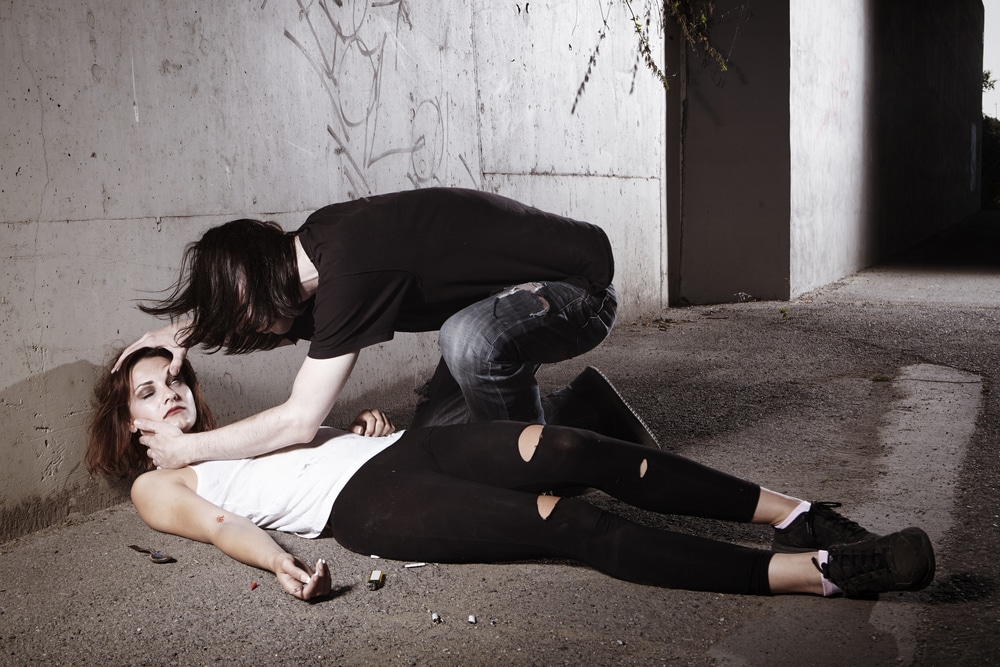
You’ll know you are overdosing when you notice some evident changes in your eyes. Narcotics like fentanyl, hydrocodone, morphine, and heroin cause the pupils to constrict, eyelids to become heavy, and eyes to water.
Changes in eye’s general motion or color are signs of intoxication. Red eyes are a common symptom of overdose for several drugs, especially marijuana, cocaine, and alcohol. This is because of the expansion of blood vessels in the eyes.
Here are some common signs of a drug overdose indicated by the eyes:
An opioid overdose causes a slow, irregular breathing pattern. If you are overdosing on opioids, you may become unresponsive or unconscious and notice that your fingernails or lips are blue. This is due to a low oxygen supply. Identifying these symptoms quickly could mean the difference between life and death, considering opioid overdoses kill about 128 people each day in the US.
Stimulants may have an opposite effect to opioids. They tend to increase the heart rate and cause chest pain, palpitations, and even stroke or cardiac arrest. When your heart is overly stressed, it may cause small muscle tears, bleeding, and severe pain.
Some common signs of overdose indicated by the heart and chest include:
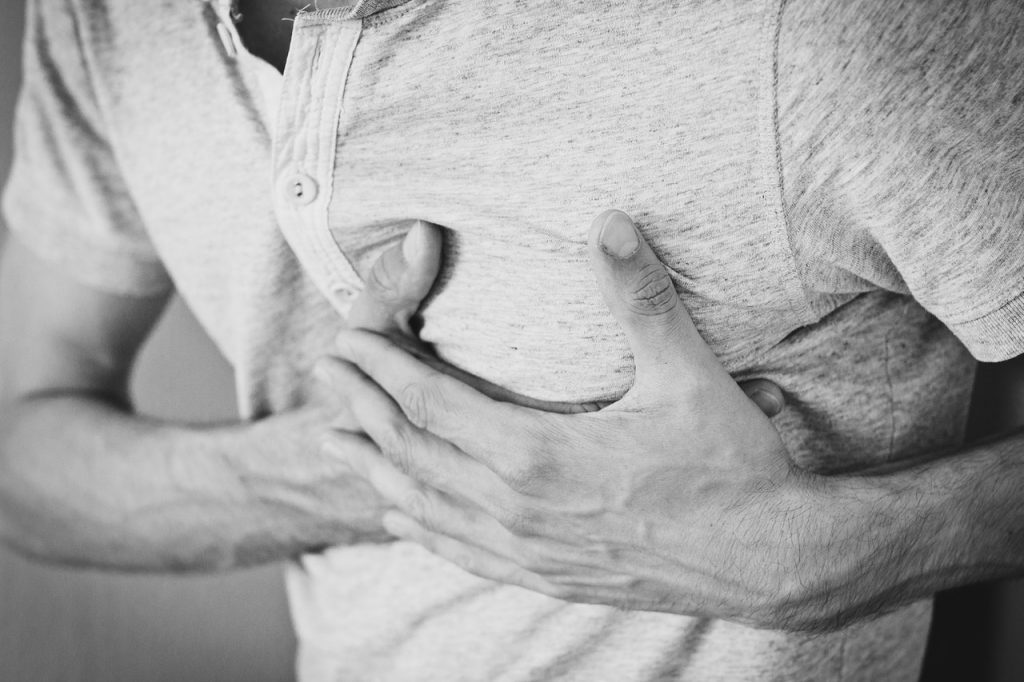
Depressant overdose may result in loss of consciousness. Stimulant overdose, on the other hand, will cause aggressiveness, agitation, and anxiety. When you overdose on stimulants, depressants, or both, you may find that you are violent or aggressive – and that your behavior is largely unpredictable.
You may also feel confused and disoriented. In this case, you’ll find that you’re talking rapidly or nonsensically. You may fall, stumble, scream, or cry. And even if you are still conscious, you may notice that you aren’t in touch with your surroundings or able to maintain balance. So basically, you’ll know you are overdosing when you are:
Of course, you won’t know about your unresponsiveness or unconsciousness until later on when you recover. Unconsciousness happens when the brain cells shut down because of the overwhelming amount of toxins in your body.
Vomiting is your body’s way of getting rid of any toxic substance from the gastrointestinal system. It is perhaps the easiest way to tell you are overdosing since it’s more of a physical reaction. Sadly, you may vomit while unconscious, which makes it a choking hazard because you won’t be able to expel it. If this happens, you may suffer brain damage or even death. Vomiting is often accompanied by nausea.
Overdosing from alcohol or stimulants, like cocaine or methamphetamine comes with a risk of seizures. A seizure is a medical emergency; therefore, calling 911 as soon as you notice early signs like trembling and shivering can help save a life.
In extreme cases of drugs or alcohol overdose, you may end up dead. Drug overdose deaths are so common that there were 67,367 cases in the US in 2018 alone. While data for 2019 and 2020 has yet to be finalized, provisional data from the CDC suggests that drug overdose deaths are on a steady increase. The provisional data from 2020 shows a 13.2% increase in drug overdose deaths from the prior year. According to the Centers for Disease Control and Prevention (CDC), opioids, particularly synthetic opioids, are the main driver of drug overdose death.
These are only a few signs and symptoms of overdose – and they may vary from person to person. If you are experiencing an overdose, you should get immediate attention from medical professionals. Calling 911 can be a great way to access emergency help. The operator will ask about your symptoms and provide critical information about the things you should do as you wait for the ambulance to arrive.
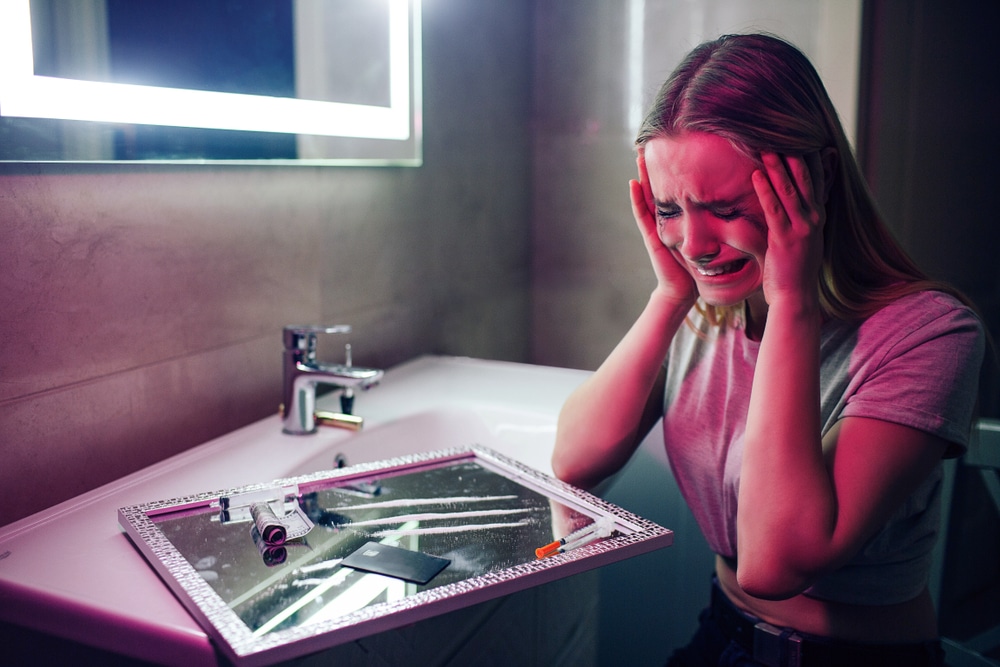
You can overdose unintentionally for a range of reasons – like when you:
In many cases, drug overdoses are unintentional. When you start taking a drug, your body builds tolerance. So you’ll need to take more and more to achieve the same effect you did when you started. Failure to do so will lead to withdrawal symptoms.
In unintentional overdose deaths, many events can happen that increase your chances of overdose. For instance, illegal street drugs often mix with other substances – so you may not know how much of the drug is in each hit. Again, since illicit drugs are never labeled, a hit can be more potent than you anticipated.
Other common risk factors for overdosing include:
But it is also possible to overdose intentionally, when seeking a desired effect – to harm yourself or get high. If you’re overdosing to harm yourself, you should know that there are better ways to deal with the “unmanageable feelings.”
Intentional overdose can happen when you have an untreated mental disorder like anxiety, depression, and so on. If this is the case, it’s essential to seek treatment through a licensed rehab center that knows how to treat comorbid health conditions.
A drug overdose is a medical emergency and should not go unreported. Many states apply the Good Samaritan laws that protect you or anyone who calls 911 to report the emergency. So you don’t have to worry about ending up on the wrong side of the law.
Substance use disorder is one of the main causes of drug overdosing. It is, therefore, critical to seek help soon to avoid the severe consequences of an overdose. While knowing the signs and symptoms of an overdose is essential, treatment at a rehab center is the best way to safely detox, identify any underlying mental health issues, recover and lead a healthy life.
Treatments for substance use disorders can be expensive, especially for individuals who are underinsured or uninsured. Unfortunately, the treatment cost is a deterrent to care for this group. Luckily, there are numerous resources designed to help those who cannot afford to pay for addiction treatment. State-funded drug and alcohol rehab is one such resource.
Statistics reveal that only 11% of over 21.2 million people aged 12 or older who needed substance use care received treatment at a specialty facility in 2018. Of this number, 1 in 3 cited a lack of health insurance or not being able to afford care as the reason for not receiving treatment.
But the good news is that individuals who are underinsured, uninsured, or unable to pay the cost of treatment can still seek professional care through low-cost or free addiction treatment programs. These programs are offered to eligible patients at no cost and are commonly provided at different state-funded rehab centers and hospitals as well as other organizations. In this article, we will focus on state-funded rehabs.
State-funded rehabs are addiction treatment facilities sponsored by the state. As the name suggests, the treatment centers use government funds to help those receiving substance abuse treatments. The funding sources vary from state to state, according to the Substance Abuse and Mental Health Services Administration (SAMHSA) publication. But most of these programs get their dollars through state budgets, a combination of federal grants and reimbursement through Medicaid.
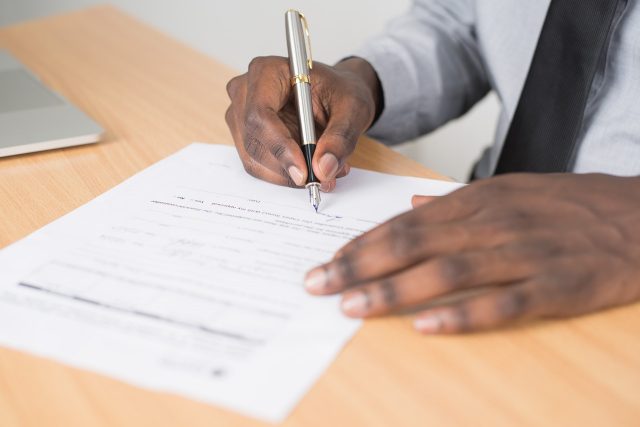
Many state-funded drug and alcohol rehabilitation programs exist, but many are limited in capacity.
Although these programs vary by state, most have strict eligibility requirements. Applicants may need to be citizens of the US and show some proof of residency in the state that they’re seeking rehab treatment. They also have to reveal their history and degree of addiction and demonstrate their inability to afford other care options based on different aspects, like lack of insurance, income, etc.
A recent report by SAMHSA indicated that there were more than 2 million admissions to state-sponsored drug and alcohol treatment centers in 2017. With potentially a large number of applicants and limited funding, it may be difficult to get into a state-funded program. Eligible candidates are therefore likely to be placed on a waiting list until a spot becomes available. The wait can take anywhere from a few weeks to several months. However, most programs will provide some form of support during the wait for an opening.
The Cost – A majority of state-funded rehab centers provide treatment to eligible persons at substantially lower rates or even free of charge. Thanks to these programs, many people can get expert care without having to worry about the cost.
Safe environment – State-funded programs offer care in a controlled setting. This allows patients to be in a safe environment for a greater recovery opportunity. There’s also the interaction aspect – where patients get to mingle and talk with peers who are going through the same experience.
The care – These centers hire experienced and qualified experts. So patients are certain of getting quality services at these facilities.

State-funded drug rehabilitation programs have saved many people's lives, when they didn't have anywhere else to turn.
Waiting times –The waiting times that are associated with these rehabs can be a bummer. Research shows that it’s essential to move quickly, especially when a long-term user is willing to get help. Often, the motivation is temporary. But most importantly, moving fast prevents further emotional and physical damage. But when it comes to the state-sponsored facility, patients have no option but to wait.
The revolving door -- Since these programs have limited funds and capacity, some patients feel that they might be released before they can complete their program. This leads to them feeling alienated from the entire thing and even lower their chances of attending a rehab again in the future.
Privacy – In addition to the waiting times, state-funded rehabs may not offer privacy as the private rehabs. Since the programs are government-operated, many patients aren’t as free to share personal information around their alcohol or drug addiction. The secrecy may limit the effectiveness of therapy and treatment.
State-funded programs have well trained and skilled experts who can offer a quality treatment that uses techniques and evidence-based treatment that are result-oriented. Different studies have shown that treatment in public rehab facilities is just as effective (with about the same results) as private centers. But with limited funding, these rehabs aren’t always able to offer the latest in complementary therapeutic care and technologies compared to private treatment facilities.
State-funded rehabs may include anything from outpatient and inpatient care to partial hospitalization and follow-up support, just like private rehabs. And despite the chances of having more standard or basic recovery settings, these facilities can still offer effective detox, support services, and treatment options to help patients who are underinsured, uninsured individuals or have less income. Many state programs will even go to help the homeless and less-fortunate.

When resources are available, many state-funded and private charity addiction treatment programs can immensely help at-risk populations.
Even so, state-funded programs may not have the same in-house therapy or other support services as private ones. So, they refer patients to self-help groups and counseling services for behavioral health and other mental health issues. Again, free rehabs won’t have the most comfortable accommodations to meet the needs of the most sophisticated patients. State funding doesn’t offer all the comforts or other high-end amenities that are included in private residential treatment facilities.
But as we discussed earlier, the addiction treatment cost in a state-funded rehab facility is significantly lower (or even free) compared to a private facility. Although the actual cost of care varies based on a person’s eligibility for the program and the types of services that are needed, state-funded rehabs are way cheaper and an attractive option to the uninsured, underinsured, and low-income earners.
SAMHSA runs a Directory of Single State Agencies for Substance Abuse Services that highlights the state-sponsored rehabs in all states. Although the Single State Agencies (SSAs) are in charge of offering drug and alcohol prevention guidance and prevention services to the entire population of their state, most of their resources are geared towards providing addiction treatment to the uninsured, underinsured, and low-income earners.
SAMHSA also offers a Behavioral Health Treatment Services Locator tool that allows patients to find state-funded rehab facilities nearby. Patients can customize their search to specific requirements to narrow down the options. For those who don’t want to use tools or references, a simple Google can reveal a list of state-sponsored treatment facilities nearby.
Each state provides alternative options to private care. Most of these programs are available free of charge to eligible candidates. Although state-funded rehabs may not be categorized as luxury care, they still offer the highest level of care needed along with a conducive atmosphere to recovery.
Eligibility for state-funded drug rehab programs often includes residency in the state offeringthe program, proof of income or lack of insurance, and evidence of substance use disorder.These programs prioritize assistance based on various factors, including the severity ofaddiction and financial need.
In state-funded drug rehab programs, the type of treatment available to an individual may beinfluenced by the program's assessment of their specific needs, available resources, andcapacity. While there may be some flexibility, options could be limited compared to privatefacilities.
After completing treatment in a state-funded drug rehab program, individuals often receive a discharge plan that includes recommendations for continued care, such as outpatient therapy, support groups, or aftercare programs to support long-term recovery and prevent relapse.
State-funded drug rehab programs typically offer a variety of addiction treatment services, including detoxification, inpatient and outpatient treatment, counseling, therapy sessions, and support groups. These programs aim to provide comprehensive care tailored to the individual's needs to support recovery and prevent relapse.
Addiction can be both psychological and physical. Treating the physical aspect alone won’t address the psychological triggers that compel an individual to keep abusing substances. Addiction needs personalized treatments that address the symptoms, triggers, and consequences that drug abuse has on different areas of an individual’s life. That’s why many treatment facilities use various types of therapy as part of a holistic approach to tackle addiction and its related issues to reduce the risk of relapse.
Treatment for mental health and substance use disorders has come a long way. Numerous studies and clinical trials have shown the effectiveness of different therapy techniques in addressing a range of issues, including stress, depression, schizophrenia, substance abuse, and so on. As an example, behavioral therapy is known to enhance the physical and psychological well-being and prevent relapse of substance use, mental illness, or both in dual diagnosis patients.
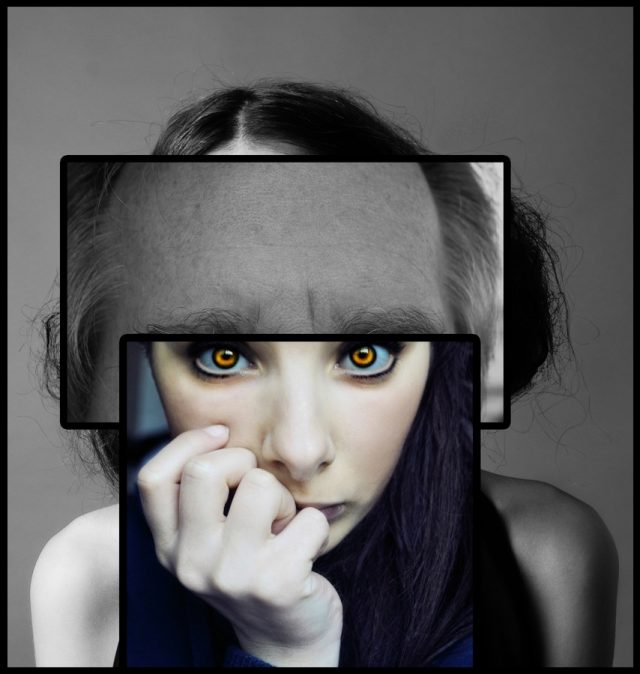
Many who need addiction treatment, also need therapy to address mental health concerns that may have contributed to their substance use disorder.
Kicking the addiction habit is a lifelong process that needs consistent application of coping mechanisms. Addiction relapse rates, according to NIDA, are similar to those of chronic illnesses like heart disease, diabetes and asthma. So, the risk of relapse, irrespective of how long one has been clean, is high. This is why the importance of therapy in treating addiction can never be overemphasized.
Addiction is a huge problem today. In 2014, about 20.2 million adults aged 18 and over had substance use disorder in the past year. Of these adults, 6.2 million had illicit drug use disorder, while 16.3 million had alcohol use disorder. What starts as a fun activity can escalate into a full-blown addiction problem.
Addiction changes the way human brain works. It alters the reward center to the extent where one craves for the substance, losses control, and ends up using despite the adverse consequences. As we mentioned earlier, addiction is complex and involves more than the physical aspect. Treating physical manifestations and ignoring the emotional part is not enough.
Even after detoxification, one is still at high risk for relapse. Sudden life stress, environmental cues, social networks, among other factors, can contribute to relapse. Therapy helps one escape the cravings and learn to handle whatever it is that life throws their way without turning to drugs.
Therapy plays a vital role in a successful addiction recovery plan. Many alcohol or drug addiction programs understand this and include different types of therapy into their patient’s treatment plans. There are various forms of therapy, but according to the Principles of Drug Addiction Treatment by the National Institute on Drug Abuse, behavioral therapies are the most effective in treating addiction.
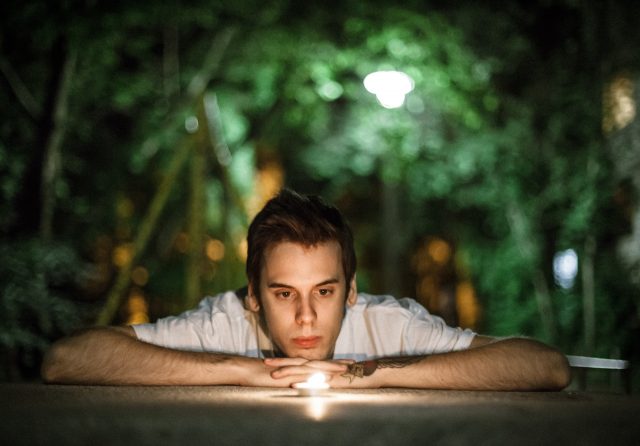
Talking through your problems with a licensed addiction treatment counselor can help address mental health issues associated with your drug use.
Therapy is a linchpin of addiction treatment for many people. Family Counseling, Cognitive Behavioral Therapy, Contingency Management, and other forms of therapy can help a patient manage drug cravings and avoid relapse. It can also address mental health disorders that often contribute to substance use.
In one post, a TIME writer who almost lost his son to addiction said he sees hope in evidence-based treatments (EBTs) and treatment programs that emphasize research-based therapies like Motivational Interviewing and Cognitive Behavioral Therapy in addition to medication.
The National Institute on Drug Abuse indicates that behavioral approaches help individuals in substance abuse treatment in vast ways. It engages them and offers incentives for them to maintain sobriety. It also modifies their behaviors and attitudes towards drug use and increases their life skills to tackle environmental cues and stressful situations that may trigger intense cravings for use.
With that in mind, let’s look at why therapy is essential in treating addiction:
One of the main reasons people don’t treat addiction is because they are skeptical about quitting. Some of them are in denial, while others feel fear or shame, and so on. Therapies, like motivational interviewing, help such people resolve insecurities and ambivalent feelings to find internal motivation they need to change their addictive behavior. This therapy allows one to recognize the impact of drug use in their lives and that of their loved ones, and nudge them to take a step toward recovery.

Just talking through your problems with an addiction treatment professional can really help you start off on the right foot.
Many individuals who are dependent on drugs or alcohol feel as though they’re deep into it and cannot stop. Cognitive Behavioral Therapy (CBT) can come in handy in such cases, as it modifies the behaviors and attitudes behind people’s difficulties, and change the way they feel. CBT helps individuals to understand why they crave substance and arms them with tools to cope with the cravings and feelings. It’s effective in addressing vast issues, including mental illnesses and substance use disorders.
Patients experience many mixed emotions during detox. Talk therapy during detox helps them to change unhealthy responses and live life positively. Counseling supports patients during their journey from addiction to developing a healthy and productive life.
Addiction is a family disease. In most cases, the drug-dependent individual strains relationships because of their habits. But again, some people abuse drugs because of underlying family problems. Family Behavior Therapy (FBT) treats substance use disorders along with coexisting issues like depression and family conflict. It also educates family members about addiction issues and how to help their loved one through their journey to sobriety.

Having a network of family and friends can help you achieve sobriety. Peer support is crucial to maintaining your recovery.
Group therapies, like Alcoholics Anonymous or Narcotics Anonymous, are effective for drug and alcohol addiction. Being in a group setting allows individuals to get support from peers. It also is an excellent opportunity for one to see their problems in a new light and try out new ways of thinking in a safe environment without fear of judgment. Group therapies are not meant to be a substitute for professional help – but a complementary therapy.
Addiction is a complex disease. It is physical and psychological and may worsen depending on one’s emotional state, mental health, environment, and other aspects. Holistic approaches that include a simultaneous focus on mind and body for complete healing take care of the patient’s physical and psychological needs. So, in addition to detox, medical advice, and other forms of interventions, patients need therapy, meditation, massage, acupuncture, etc., to through to achieve life-long sobriety.